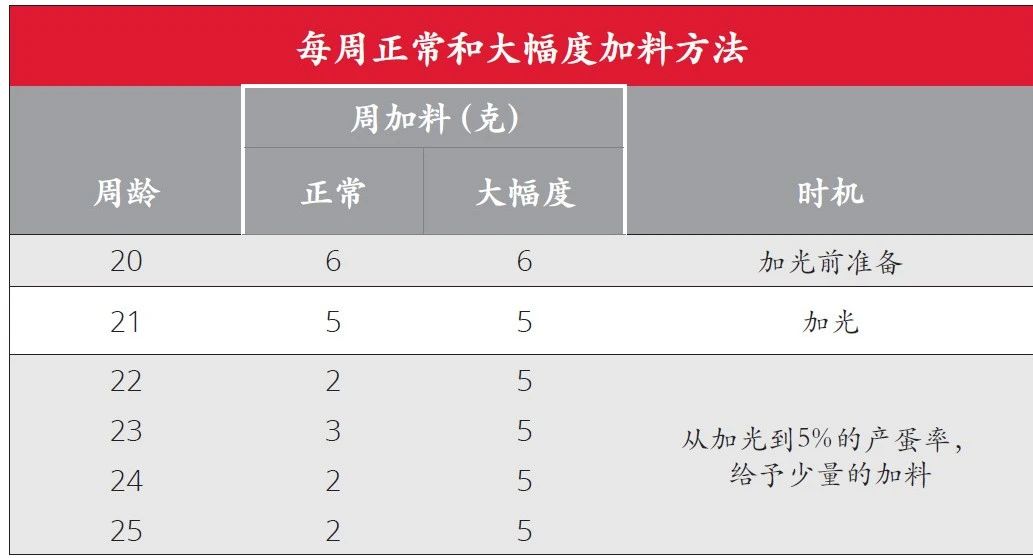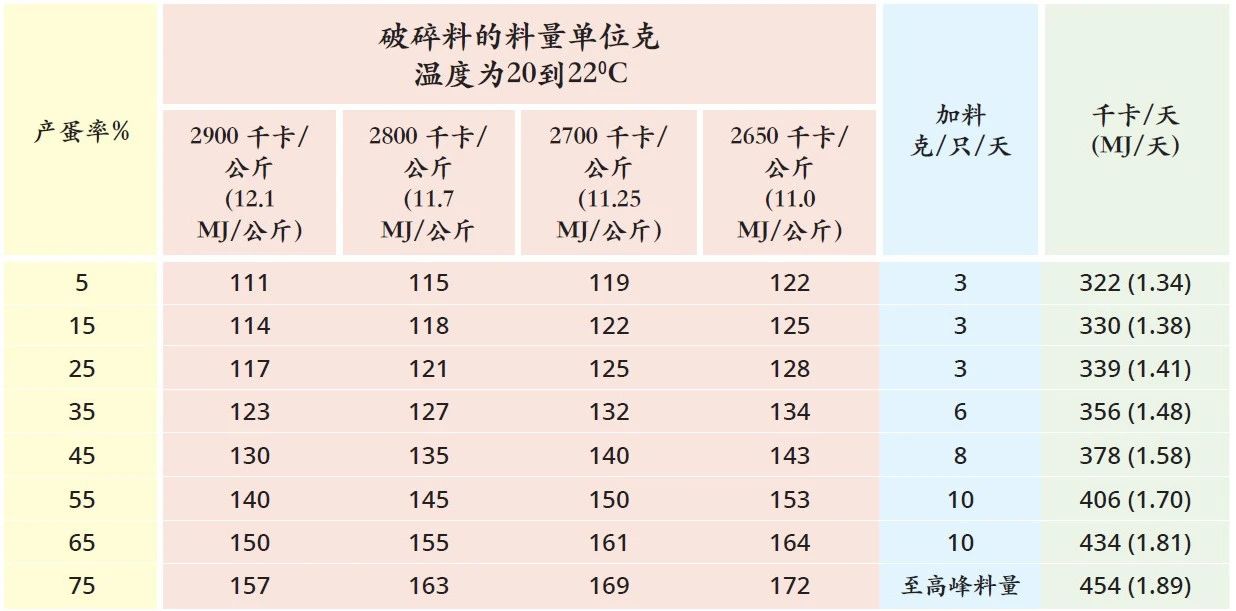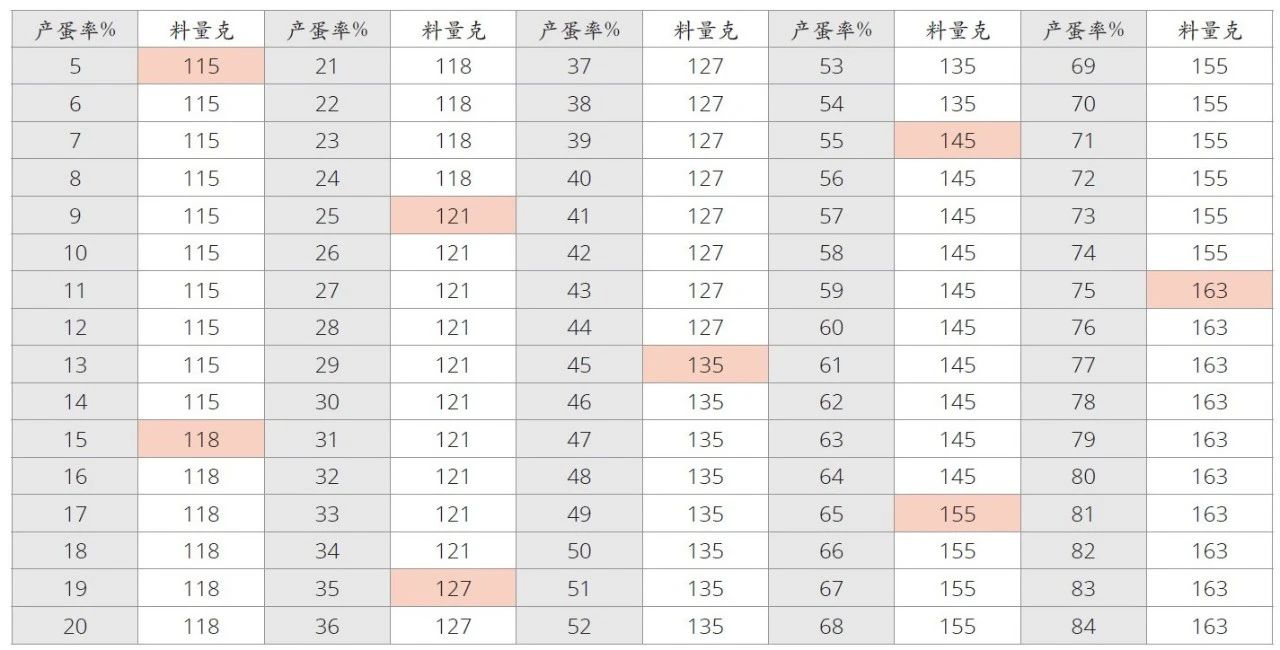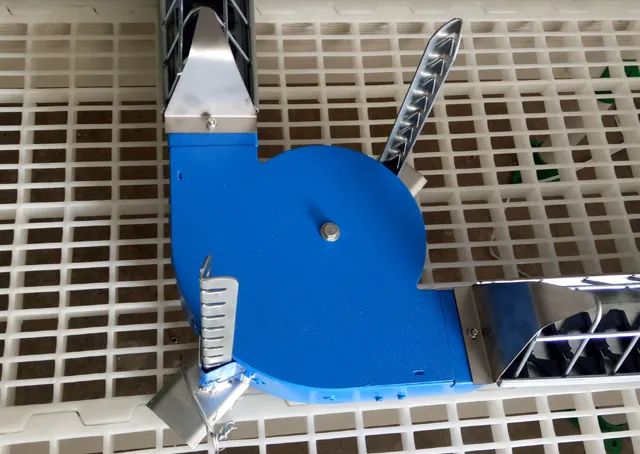For a breeder flock, the period from light to peak egg production is nutritionally critical. Stimulated by light, the hen distributes available nutrients to the reproductive system to ensure its maintenance, growth and development. A good program management program helps.
Quantity management of hens from adding light to laying eggs
From light to start, feed according to weight. Under normal body conditions, it is usually necessary to increase the feed by 2-4 g/piece/week after adding light. If you are using a high volume, such as 4 or 5 g/week, consider increasing the volume in 2 steps, 3 g and 2 g every 4 days.
Key point
Observe and touch the chickens to check the crop filling to ensure they are feeding and drinking properly. Breast type was examined and weighed weekly (1% to 2% or 60 to 100 birds) to calculate average weight and flock evenness.
Effect of feed volume on weekly mortality trend
Compared with the weekly death rate of the large and conservative feeding, the weekly death rate of the large feeding range has a higher death rate after the addition of light, as used in the table below.

When the chickens reach the daily production rate of 5%, the feeding scheme should be designed to make the laying rate reach the peak. This plan can be achieved by deducting 5% of the actual volume from the expected peak volume. Calculate the amount of feed increase for every 10% increase in egg production rate. Feed the hens to 5% of their body weight. Thereafter, feed should be added according to the daily egg production rate. Under normal circumstances, the total increase of 40% from the daily rate of 5% to 45%, 60% feed to the daily rate of 45% to 80%. Different daily egg production rates, peak feed in 70% to > 80% to give. It is important for each company to assess their daily egg production rate and peak weight gain to determine if they are overfeeding. The perimortem rate associated with vitelline peritonitis is a clear indication of overfeeding.
Ensure feed quality and composition such as energy and protein levels. Peak-laying flocks are more susceptible to stress. Raw materials are essential to ensure that hens produce and hatch high quality chicks.
High-producing chickens require 24 to 25 g of protein, 1000 to 1050 mg of digestible lysine and 950 mg of digestible methionine + cysteine daily. Temperature changes in the house can also affect the amount of feed the hens need. The temperature in the house is maintained between 21°C and 22°C. Consider volume adjustments to accommodate environmental conditions beyond this range.
3 examples of energy levels (kilocalories) based on different house, environmental control conditions and feed types
Example 1: Use 435 to 445 kcal 85 MJ/kg) with a good particle or crushing material and a loop control house.
Example 2: Use 445 to 455 kilocalories with crushing or powder and environmental control houses.
Example 3: In temperate climates, use 460 to 470 kcal in an open house.
* When the daily egg production rate reaches 75% to 80%, the peak feed should be given. The feed amount depends on the feed type and energy value and is usually between 435 and 470 kcal.
The table below provides examples of feeding methods for daily egg production from 5% to 75%. The data is based on the global average and the amount of crushing material required for chickens to be in their temperature comfort zone (ambient temperature between 20 and 22°C).

From the table:
Laying rate 5% The amount depends on the energy level.
The energy level of most egg-laying diets around the world is usually 2800 kcal. At this level, the average feed at the start of laying (5%) is about 115 g.
The daily egg production rate is 45% at a feed energy level of 2800 kcal, and the average feed volume needs to be at 135g and not exceed 145g. This higher feed will result in significantly higher body weight and, in most cases, higher mortality in hens during the peak laying period.
In order to avoid feeding too much, from the start of production to the peak of egg production, feed once every 3 days, not every day.
Daily supplements often lead to excess weight after peak egg production.
In tropical areas, the temperature in the house is significantly higher than the range of the chickens' thermal comfort zone, and the energy intake is reduced: 435-445 kcal range.
In cold weather, naturally ventilated open coops require a higher energy intake during peak egg laying.

Above is a spreadsheet template for calculating daily egg production from 5% to peak egg production. The following example is 5% per day and 115g per load.
How to use this table:
Input the amount of material at a daily rate of 5%. The table automatically adjusts the feed rate based on the assumed daily increase in laying rate until the peak feed rate is reached at 75% laying rate.
If the given peak volume is too high or too low than set, manually change to 75% volume.
Feed every 3 days - Use the current egg per day percentage to get the proper daily feed. This amount should be used for the next 3 days.
The peak feed is given when the daily egg production rate reaches 75%.
There are so many different conditions that it is impossible to give a definite energy requirement.
Hen feeding management points (add light to see eggs)
Accurate and regular calibration of the weighing system is essential.
The daily feed quantity must be based on the actual number of chickens. (Actual number of chickens = number of chickens coming in - cumulative mortality + culling).
At peak times, the net feeding time should be 2.5 to 3 hours. The net feeding time of particles or broken materials should be 1.5-2 hours. If there is a sudden change in the net material time, it should be investigated immediately.
It is highly recommended to use the Kebao nutrition formula specifically designed for Kebao male hens.
Egg Laying No. 2 contains high levels of calcium and energy that are beneficial at 35 to 40 weeks of age.
Supplementing is beneficial to increase mating rate. It should be fed in the late afternoon at 0.5 kg per 1000 chickens, which is counted in the daily feed.
Prevent feed waste. Check whether the tank is worn and whether there is overflow in the hopper.
The amount of material is 1/3 full. Check that the discharge port is opened correctly every day.
The opening size of the outlet of the material box should be adjusted according to the height of the corner.
Transfer until the material is finished.
It can operate automatically when feeding, but the equipment needs to be maintained well. When the equipment is obsolete, the presence of feeding staff is required.

he chain feed line with the corner on the high side prevents the feed from spilling out of the trough and therefore allows for a high feed trough (see picture above).
The same procedure is used for disc lines - the general disc line system uses granular and/or broken materials. Powder usually does not work well in a winch system.
The bin must be used up each time the refuelling is done to ensure the quality of the material, and the bin must be empty at least once a month during the laying period.






